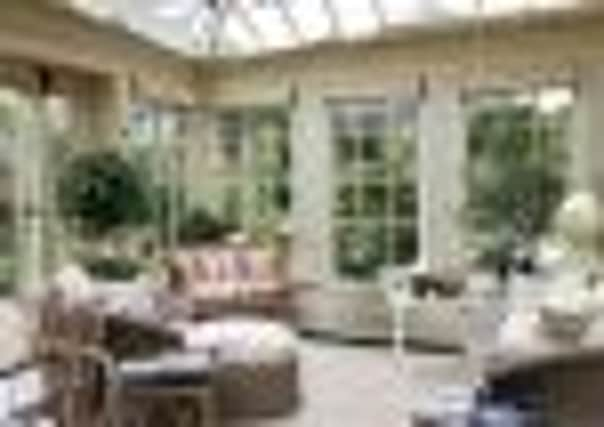Let some light into your life


Conservatories can be a relatively inexpensive way to extend a home and one that, if carefully planned, is likely to create a return on investment. According to the Royal Institute of Chartered Surveyors (RCIS) they can add between four and five per cent to the value of your home. This is obviously dependent upon choosing a design that is sympathetic to the age and style of your home and in-keeping with the environment in which it is located.
One of the popular misconceptions is that conservatories are not subject to planning permission. This is actually entirely dependent upon your local authority, many of whom have their own requirements, so it is always essential to check with them before you go ahead.
Advertisement
Hide AdAdvertisement
Hide AdIf you are faced with the challenge of adding a conservatory to a period home you may want to consider one of the three National Trust designs available from Vale Garden Houses (www.valegardenhouses.com; 01476 564433). This range of modular conservatories has been designed by Vale with the support and advice of the National Trust’s Historic Building Advisor. There are three designs, each based around a different architectural style.
The added benefit of natural light (even the meagre version that we sometimes get in the UK) will help lift spirits throughout the year. This makes a conservatory ideal for use as an everyday living space, rather than an occasional use room – so consider their construction carefully.
After aesthetic design, the next most important considerations should be ventilation and temperature, which are key to this being a room you will use throughout the year. There is nothing worse than a conservatory that is too stuffy in the summer and too cold in the winter.
Jane Hindmast of Vale Garden Houses advises: “You need to ensure cooler air enters the rooms through the sides with hot air being expelled through the roof. Side ventilation can take the form of doors, a side opening or a top opening window with the airflow being achieved through the use of top vents, top hung windows or rising canopies”.
Advertisement
Hide AdAdvertisement
Hide AdI would always consider the automated options that are available. They may seem an extravagance, but can make living in your conservatory considerably more comfortable. The most practical that I have come across are thermostatically controlled roof vents with rain sensors that take all of the guess work (and a lot of the labour) out of creating the perfect environment.
The type of glass that you employ also has a major impact on the temperature, specialist products such as Pilkington K Glass or Ultraframe Conservaglass are designed specifically to keep external heat out in the summer and reflect emissions from central heating back into the room in winter. These products also help filter some of the more harmful rays to help protect furniture and soft furnishings.
Once the sun goes in you will quickly understand the importance of back-up heating. Probably, the cheapest method is to extend your existing central heating system, but take advice on boiler capacity to ensure that it can cope with the addition. Radiators can prove a problem to accommodate if you do not have sufficient wall space, so consider under-floor heating which is a good method of achieving a more regular temperature and maximises the floor space available for you to use.
These rooms are a gateway between the inside and outside, so your interior scheme needs to nod to the garden. Any window dressings should be kept extremely simple to allow the maximum view. Sail cloth is a sympathetic finish for ceiling blinds, while wooden venetian blinds across side windows and doors can provide extra privacy without hiding the view.
Advertisement
Hide AdAdvertisement
Hide AdWhen choosing a colour for window treatments either continue the idea of a garden portal by matching them to a shade that is visible externally throughout the year or blend into the background by toning to the colour chosen for your wall or floor finish.
One of the nicest products for furnishing a conservatory used as a dayroom is traditional Lloyd Loom, manufactured from woven twisted paper and wire. It is extremely durable as evidenced by the on-going market in vintage pieces. This manufacturing method is still employed by Lloyd Loom of Spalding and Vincent Sheppard who both offer ranges of traditional and contemporary designs which cope well with any potential changes in temperature and humidity.
Avoid dark colours in your upholstery, particularly red, as these can fade quickly in direct sunlight, but do not be afraid to opt for soft finishes.
You may also want to consider using some of the fabric ranges designed specifically for outdoor use as these are more fade resistant.
Advertisement
Hide AdAdvertisement
Hide AdAfter all that, you can just settle back in a comfy chair and admire the view whatever the weather!
Jamie Hempsall, BIID is an award winning interior designer. Visit him at www.jamiehempsall.com or contact him on 0800 032 1180.